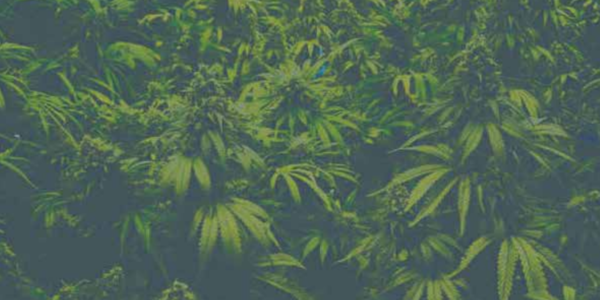
No Longer a “Drug Clean Nation?” How Korea Lost Its Glory
T h e t o t a l n u m b e r o f d r u g offenders in Korea exceeded 10,000 for the first time in 1999. There were fluctuations afterwards, but the offender line managed to maintain a similar level. In 2019, it became easier to contact drug suppliers overseas using the Dark Web and Telegram. Consequently, the number of drug offenders surged to approximately 18,000. According to public data from the Korean Drug Crime Investigation Office, the cumulative number of drug crimes in Korea was 5,945

as of May 2022. The number of drug, psychotropic, and marijuana crimes have all increased compared to last year. Yoon Jae-seok, a professor from the Department of Pharmacy at Chungbuk National University, emphasized, “The real problem is that the number of drug offenders does not precisely represent the number of people who actually do drugs. In fact, there is a high p r o b a b i l i t y that far more p e o p l e a r e abusing drugs. According to the estimates o f f o r e i g n studies, about 20 to 40 times more people are likely to be involved in drug crimes.”
What is Causing the Korean Drug Crisis?
There are several causes behind the current drug situation in Korea. First, the dependent and addictive nature of the drugs themselves keeps attracting more and more people while, at the same time, preventing them from escaping the addiction itself. Easier access due to technological developments i s a l s o a major

factor. However, Lee H a n - d o k , a n official of the Korea Association Against Drug Abuse (KAADA)’s rehabilitation center, has suggested different factors as primary causes: “Our rehabilitation program’s patients’ most common route of coming across drugs is curiosity. The second is abusing drugs after encountering them through psychological disorder prescriptions. Although they remain relatively few, there are also cases of becoming an addict after traveling or studying abroad.” According to official Lee, the percentage of marijuana addicts among those enlisted in the rehabilitation programs is 38 percent. In fact, the number of Korean marijuana offenders had been around 1,500 until 2019 but soared to approximately 3,200 in 2020. The Supreme Prosecutors’ Office has confirmed that more offenders were caught due to intensive police crackdowns on Korean travelers and students, particularly those who have abused drugs abroad in countries where marijuana is legal, such as the United States of America and Canada. Hence, the legalization of marijuana in foreign countries seems to have had a considerable influence on the Korean drug crisis.
Thailand: First Asian Country to Legalize Marijuana
Thailand officially decriminalized medical cannabis in January 2022 and became the first Asian country to announce the legalization of marijuana. However, it had not always had a drug-friendly approach. I n 2 0 0 3 , t h e former Thailand Prime minister, T h a k s i n S h i n a w a t r a declared a “war on drugs.” As a result of this policy, hundreds of Thai drug offenders were given the death penalty and executed. Thailand’s strict stance on drugs completely changed in the late 2010s. Anutin Charnvirakul, Thailand’s Minister of Public Health, made a major pledge to legalize cannabis in the 2019 election. There are various assumptions on why Thailand chose to legalize medical marijuana, which can be narrowed down to political, medical, and

economic reasons. Park Kyung-eun, a professor from the Department of Thai Language at Hankuk University of Foreign Languages, says, “One of the biggest reasons that Thailand has legalized medical marijuana is for higher political advocacy. To start with, many local politicians have insisted on legalizing cannabis, and the public sentiment towards the ruling political party fell as the economy deteriorated due to COVID-19. Thailand seems to have chosen to legalize cannabis to enhance and stabilize public advocacy. Then, there are economic reasons. Charnvirakul himself has described marijuana as ‘green gold.’ This illustrates how he saw an opportunity from the crop.” In fact, legalizing marijuana is a financially prudent choice. To be specific, decriminalizing the drug allows Thailand to free thousands of drug offenders from prison. Since Thai prisons were previously overcrowded and had management difficulties, this major discharge has taken a burden off the government’s shoulders. Moreover, implementing cannabis as a medical treatment option in the health department provides a powerful but relatively moderate measure for the public. Opening hospitals and clinics that specialize in cannabis treatment is expected to raise about $450 million in profit by 2025.
Marijuana Legalization: Not Going as Planned?
Prior to the legalization, Thailand’s government emphasized that the marijuana usage would be limited to medical drugs. However, Thai cafés and restaurants may also sell foods or beverages with cannabis as long as they follow the guideline: the marijuana infused products must contain less than 0.2 percent tetrahydrocannabinol (THC). In local sites, ice-cream, curry, chicken, fried food, coffees, and juices that include marijuana can be found easily. However, problems have arisen as the guidelines are not always kept, and even if they are, there are people that misuse or abuse them. For instance, a three-year old Thai girl was taken to Chulalongkorn hospital in March due to an abnormal physical reaction after consuming a cannabis-based cookie by mistake. Similarly, there were multiple cases in Northern Thailand in which young teenagers inhaled marijuana, hallucinated, and tried to injure themselves. Consequently, officials of the International Drug Monitoring Agency (INCB), have announced that organizations, including the United Nations, are carefully monitoring Thailand’s marijuana legalization. They added that Thailand would have to implement changes to the current policy if it is concluded that the Asian country has violated the International Treaty on Drugs enacted in 1961. There is a certain logic to these international concerns being voiced: the unease is emerging because these kinds of marijuana misuse and abuse incidents are not only limited to Thai locals. There is a certain level of uneasiness that the legalization of cannabis in Thailand will also worsen the domestic Korean drug situation. This assumption is reasonable to an extent, keeping in mind that Thailand has been the number one foreign drug offender in Korea since 2019. Foreign drug offenders include those who have either prepared, smuggled, trafficked, abused, or possessed illegal drugs in Korea. Officials worry that the legalization will facilitate and increase smuggling and trafficking of marijuana from Thailand into mainland Korea. On the other hand, there are also concerns that the new Thai policy will attract Korean tourists or students to the country where they will be able to consume marijuana. Overseas travel for the purpose of drug abuse has been a serious social problem in Korea since 2001. Fortunately, Korea and Thailand have cooperated to prevent such abuse since the 2000s. This includes the 2001 Treaty of Extradition between Korea and Thailand and the 2003 Criminal Justice Cooperation Treaty. Over the years, some Koreans have carried out drug abuse abroad, thinking that they were able to get off the law, as long as they were in a drug-legalized country. Then, the Korean administrations made sure to establish the public recognition that drug-abusing Koreans will be subject to the domestic criminal law based on personal principles, regardless of location. Nevertheless, professor Park says, “I expect Thailand to be skeptical about going to great lengths purely to abide to Korean drug investigations. By informal statistics, Thailand’s tourism revenue takes up ten percent of its GDP. The legalization of cannabis is one of the policies that came out for economic growth, especially tourism. Therefore, highly strong countermeasures, such as travel restrictions are unlikely to be carried out, even if drug abuse tourism deteriorates in the future.”

Cannabis and Marijuana: What are They?
Cannabis can have substances obtained from its leaves and flowers as a type of narcotic. It can be used for diverse purposes, such as clothing material or consumption. However, it is best known for its dried leaves or flowers: marijuana. The main ingredient of marijuana is THC, a hallucinogenic substance. Marijuana has a long history of use, recorded far back as 2737 BC, China. M a r i j u a n a d e v e l o p s m e n t a l d e p e n d e n c e , a b n o r m a l i t i e s , a n d depression. Professor Yoon, who also conducted a narcotic study on marmosets, confirmed that, “The dependence and harmfulness of drugs on primates was proven through the experiment, as the marmosets eventually got addicted to drugs and injected drugs to themselves. Drugs have an adverse effect on the heart, liver, corpus callosum, dopamine, and so on.”
Two Conflicting Opinions on Legalizing Marijuana
Towards the issues related to legalizing marijuana in Thailand, there is an ongoing controversy among the public. Is it reasonable to legalize cannabis? Two incompatible opinions come into conflict. Some people agree with cannabis legalization. Firstly, they strongly argue that smoking marijuana is one’s personal choice and freedom. Though it might have a negative impact on their own health, since it does not harm others, it should not be regarded as a crime. In other words, the government cannot disturb the right of self-determination. Secondly, they believe that forbidding marijuana is not the optimal way to reduce social costs. According to their claims, there are people who will consistently smoke marijuana even if it is banned. Since the government must spend time and money catching those smoking illegally, the social costs increase. Instead, if the government legalized marijuana, it would be much easier for the government to remedy social problems that could possibly be driven by marijuana. Third, they argue that the negative influences of marijuana have been exaggerated among the public. According to the 1972 report by the Shafer Commission, also known as the National Commission on Marijuana and Drug Abuse of the United States, there are some misunderstandings of marijuana. It illustrates that smoking marijuana on an occasional basis does not have a negative influence, either physically or mentally. In addition, they claim marijuana is only dangerous when it appears on the black market. These are much more worrisome because the sellers often add unknown substances to enhance the hallucinatory effects. If the government legalizes marijuana, the number of people buying dangerous and illegal marijuana will certainly reduce. Some also claim that marijuana could be used effectively as a medicine if used wisely. According to professor Cheong Jae-hoon, from the department of Pharmacy at Jeonbuk National University, “Cannabinoids could be partially used to cure Parkinson’s disease, Alzheimer’s disease, mood disorder, and diabetic retinopathy.” Conversely, there are those who disagree with the legalization of marijuana. They argue that there are some occasions on which the government must interfere with the rights of self-determination for the betterment of society. To elaborate, the World Health Organization (WHO) defines “drug addiction” as a disease. Drug addicts cannot be viewed as responsible individuals who have an ability to perceive and make reasonable judgments. They are patients that need to be taken care of. Therefore, in this case, society is prioritized over the individual. Secondly, there are many incidents proving that smoking marijuana may harm others. In France, cases of children going to emergency rooms due to second-hand marijuana smoke have doubled in the past ten years. Also, some car accidents in the US show that driving after smoking marijuana is as risky as drunk driving. According to Chris Murphy from the U.S. National Highway Traffic Safety Administration, 36 percent of the drivers of the car accidents in California tested positive for drugs − mostly smoking marijuana. Thus, it is no exaggeration to say that smoking marijuana is harmful for both the smokers and others.
Marijuana Control Policies of Different Countries
Numerous countries have made efforts to establish efficient regulations t o w a r d s m a r i j u a n a . S i n c e e v e r y country has a different stance, they have divergent standards of legalizing marijuana. Uruguay was the first country in the world to legalize marijuana. In August 2014, the Uruguayan government declared the legalization of all types of marjuana, including recreational marijuana. Limits on possessing m a r i j u a n a w e r e e l i m i n a t e d , a n d individual households could cultivate and grow their own marijuana. However, it only applied to people over 18 and registered as marijuana possessors by the government. Therefore, foreigners cannot buy marijuana in Uruguay. Canada was the first G7 country to legalize all types of marijuana. Before the legalization, many Canadians supported the legalization of marijuana. According to the Canadian Alcohol and Drug Use Monitoring Survey in 2011, 41 percent of Canadians had smoked marijuana at least once. Therefore, in 2018, Justin Trudeau, Prime Minister of Canada announced, “All Canadians citizens can possess both medical and recreational marijuana.” Professor Cheong said, “Nonetheless, this does not mean that Canada allowed imprudent smoking of marijuana.” He added, “Canada has detailed and rigorous laws related to marijuana. Canada limits the amount of marijuana that a single individual can possess.” Also, they have “Cannabis Regulations” and “Industrial Hemp Regulations” to prevent drug abuse. In this vein, every country has incompatible standards and laws of marijuana. Even the countries which have legalized marijuana still have some regulations to prevent the inappropriate use of marijuana.
Efforts in South Korea to Control Marijuana
The number of narcotic crimes related to marijuana are consistently increasing. This tendency is not only due to the legalization of marijuana in other countries, but also the easier accessibility of illegal drugs through international routes. Efforts have been made to solve this social problem and resolve the issues related to illegal drugs in South Korea. Firstly, there is the Asia-Pacific Information & Coordination Center (APICC) for combating drug crimes, a cooperation aiming to eradicate illegal drugs, consisting of 11 countries: South Korea, Brunei, Cambodia, Indonesia, Laos, Malaysia, Myanmar, The Philippines, Singapore, Thailand, and Vietnam. It was first launched under the South Korean Supreme Prosecutors’ Office in September 2012. Since there were increased cases of illegal drugs coming to South Korea from Thailand, the APICC and The Narcotics Control Board of Thailand (ONCB) established cooperative relations. In 2019, they proceeded with an investigation to trace Thais who supplied illegal drugs to South Korea and Koreans who fled after committing narcotic crimes.

According to professor Son Kyung-bok from the department o f P h a r m a c y a t H a n y a n g U n i v e r s i t y ERICA Campus, “ N e w d r u g s a r e g e n e r a l l y produced and imported to South Korea from other nations. Therefore, it is essential to collaborate with other nations and acquire information about the new drugs with a quick response time.” Institutions supporting collaboration among different countries such as APICC will certainly help eliminate international narcotic crimes, including the ones in South Korea. Secondly, there is a reward system established by the South Korean prosecution. A monetary reward is offered to people who report narcotic crimes to the investigative agency before the crimes are discovered. This type of policy could deliver a message to more citizens about the dangers and seriousness of illegal drugs. Thirdly, numerous campaigns have been striving to prevent illegal drug usage. From April 18 to 21 in 2022, the Korean Anti-drug Campaign Center of Gyeonggi-do Province completed an education program created by the South Korean prosecution. They also carried out educational programs for the addicts. They focused on the education of the negative sides and danger of illegal drugs.
Conclusion: What Can We Do About It?
A s t h e C O V I D - 1 9 p a n d e m i c seemingly comes t o w a r d s a n e w p h a s e , m a n y people are planning t r i p s o v e r s e a s . Citizens within countries with legalized marijuana and travelers to those countries should be aware of illegal drugs. According to professor Park Seong-su from the department of Police Science

at Semyeong University, “There are some possible methods to prevent these narcotic crimes. To begin with, there should be a governmental control center to not only investigate narcotic crimes but also provide rehabilitation support to the addicts.” Furthermore, professor Park added, “There should be an approach focusing more on treatment and rehabilitation rather than punishment.” This is because punishments have limitations on eliminating drug abuse. In 2021, the rate of second convictions of narcotic crimes was 36.6 percent, quite a high rate compared to other crimes. Professor Son said, “Analyzing the drugs and figuring out a way to take care of the addicts as soon as possible is the most vital task for us.” Lastly, altering the recognition of illegal drugs is important. The public should recognize that issues related to drugs are not only limited to the individual, but also to society. All members of the society should pay attention to drug issues and seek reasonable solutions.

